Houseplants and vegetables are the “gateway drugs” to gardening. They certainly were for me, and I think they are again today. I was a university student with a windowsill full of houseplants when first bitten hard by the gardening bug. Later, Mr TG and I had our first apartment and an allotment garden at the Leslie Street Spit. One taste of our own fresh beets, and we were hooked.
Today, the homegrown movement isn’t only about food value of veggies. It’s about rethinking their ornamental value. And they certainly can be beautiful. Let’s look at different ways we can have our garden and eat it, too.
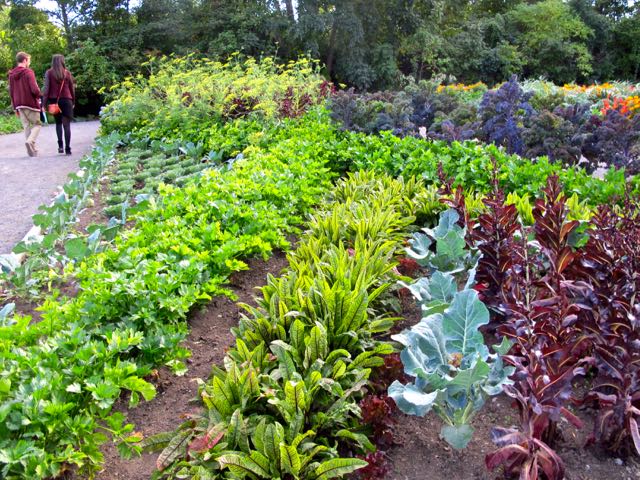
Of course, few of us have as much space as the garden above in which to create pretty patterns with the medium of vegetables. Our Leslie Street garden 30+ years ago (which to this day I regret giving up) was a decent-sized plot; maybe 15′ square. The community garden plot we more recently had measured 4′ x 8′ – easily replaced by containers at home. Which we did.
The Blended Garden
Look at veggies for their ornamental qualities. Need edging for your flower beds? Why not use parsley or leaf lettuce or the red-veined sorrel in the picture above? Want a bold-leafed focal point? How about Brussels sprouts or Swiss chard? If you grow flowers, why not mix it up and add vegetables right alongside?
The Formal Garden
No matter what style of garden you prefer, it’s possible to integrate vegetables into your garden theme. This manicured garden in Atlanta, Georgia, kept the herbs and vegetables tidy in neat ranks of raised beds, flanking the pathways and long reflecting pool.
The raised beds with their wide surface make it easy for the owners (now grandparents) to sit as they tend their garden. The supports for climbers are also neatly square. But simply made of copper pipe, which weathers to a nice patina.
The Contemporary Garden
Another Atlanta garden (viewed in an absolute downpour, or you’d see more of it) had crisp, minimalist lines. That didn’t stop the owners from adding a vegetable garden on the sunny slope just beyond the pool. At right, you can see how they also used raised beds, set on a pea-gravel base. The edible garden is a great transition between the modern and the wilder spaces beyond.
The Driveway Garden
We might not have room for a swimming pool plus a vegetable garden. But many homeowners have a driveway. (That’s where we have our trough planters, for instance.) Or even a side yard.
In her Minneapolis garden, author Rhonda Fleming Hayes created raised beds, again on pea gravel, using Corten steel. She repeats the steel in a small fountain and pond by her patio, giving the side garden a sense of unity. The twig fencing around the raised beds softens the cut-steel look, and is echoed in the obelisks for climbers.
The Romantic Garden
Another Atlanta garden included this blend of formality and charm – the central core of which is a herb garden. But take away the clipped boxwood, the face-to-face pergolas and all that room, and you could emulate it anywhere.

Zoom in for a closer look. In this circular bed, a large pot with a single Agave is the simple focal point for basil, tarragon, garlic chive and other herbs. The bed of thyme is embroidered with French knots of ornamental cabbage. Placed outside your kitchen door, it would be edible, practical and pretty.

The Streetscape
More and more cities are blending the lines between ornamental and edible. The planter below was nowhere special – just outside a parking garage in Minneapolis, Missouri [Ed: Of course, I mean Minnesota!]. I’ve seen gorgeous street plantings with vegetables on Bloor Street in Toronto and in Stratford, Ontario, too. Easy to grow, inexpensive, and many with decorative foliage, vegetables make sense.
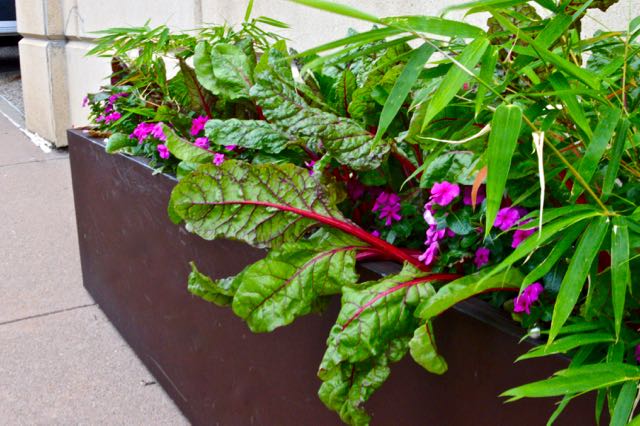
The Climbing Garden
One of the downsides of featuring vegetables in a display garden is that they can start to look less than perfect once you begin to harvest, or once they have done their thing. But you can work around that. Seed a second crop, for example, once your first round of lettuce has finished its peak.
Or, give the eye something else to look at. In the case of climbers like these, surround them with colour (like the one on the left) or make the supports themselves a decorative feature (on the right). A beautiful obelisk, sometimes called a tuteur in the States, stays clean-looking, even when the plant it supports goes into wabi-sabi mode.
What do you think? Have you found other ways to make veggies a feature in your garden?

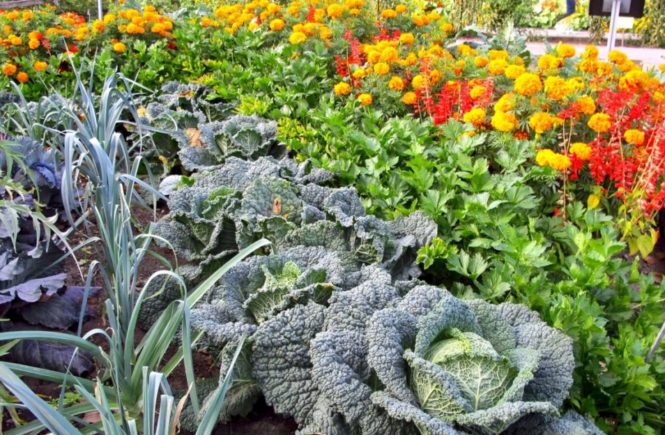
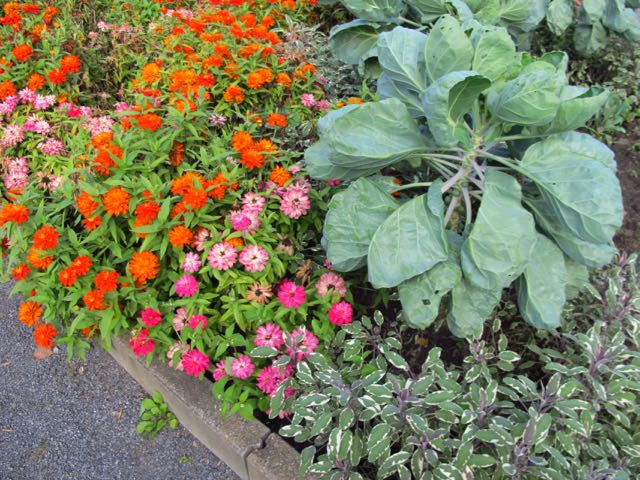
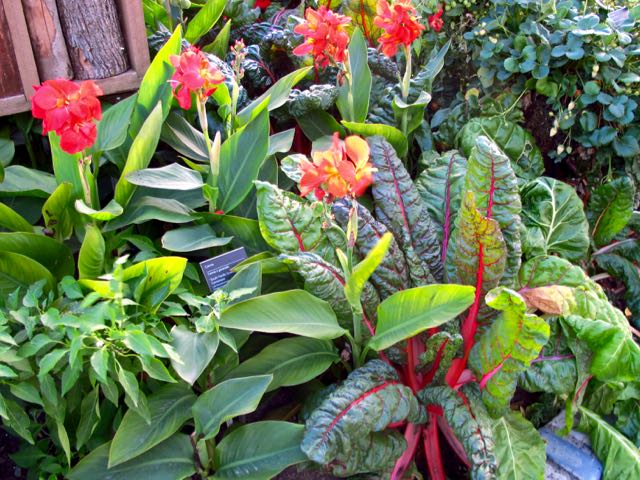
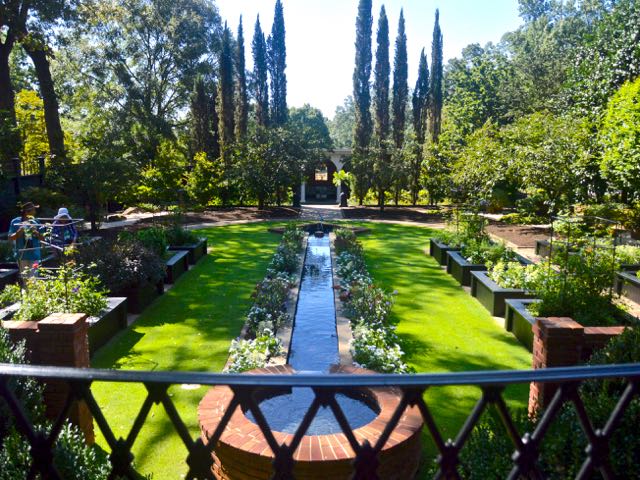
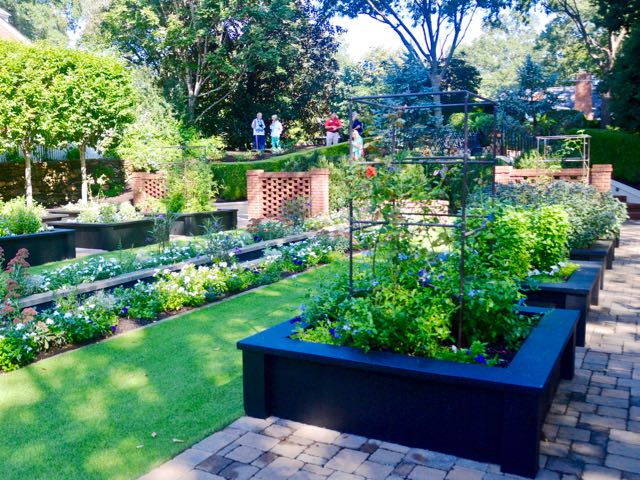
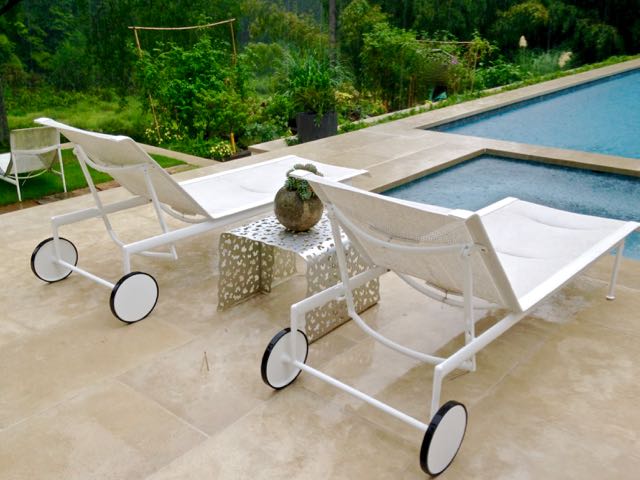
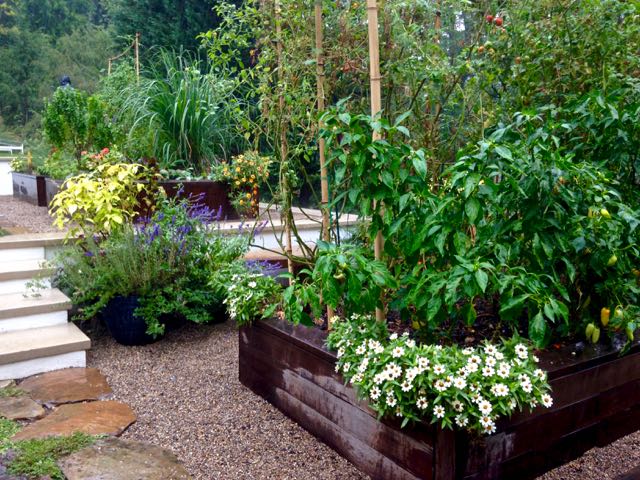
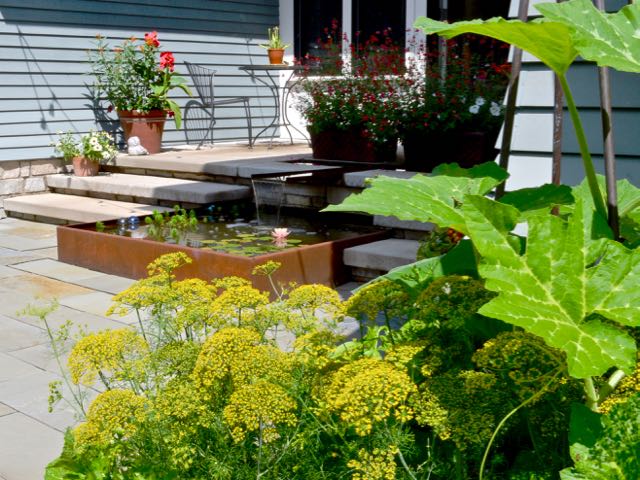
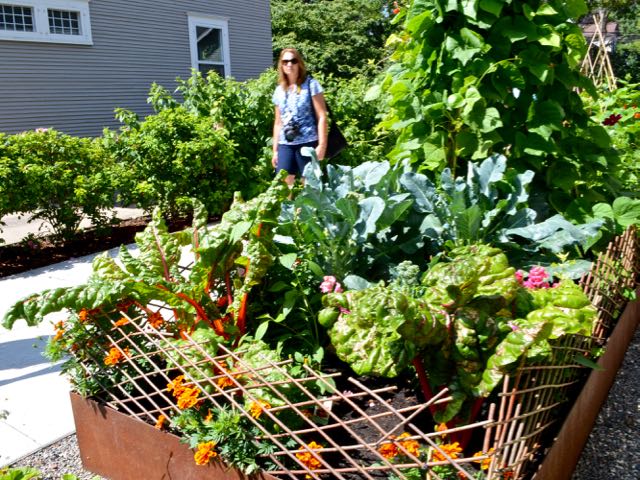
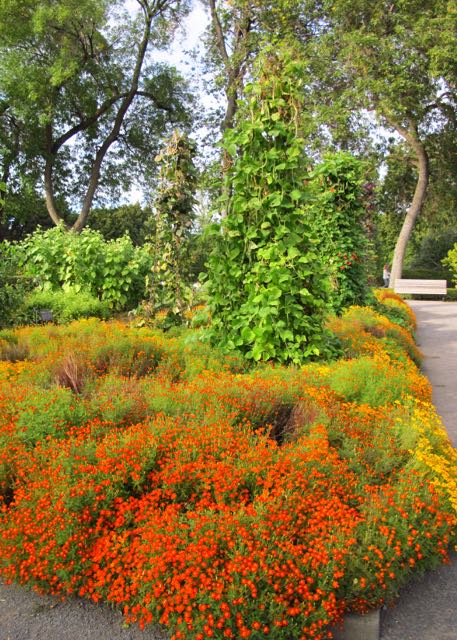
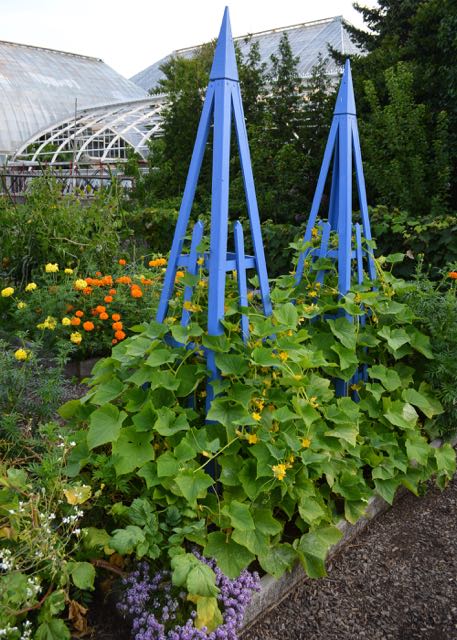

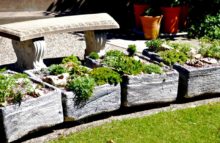

2 comments
Helen, did you mean Minneapolis Missouri or Minnesota?
Oh, mea culpa! Of course I meant Minnesota! Thanks, Jill — I’ll fix.